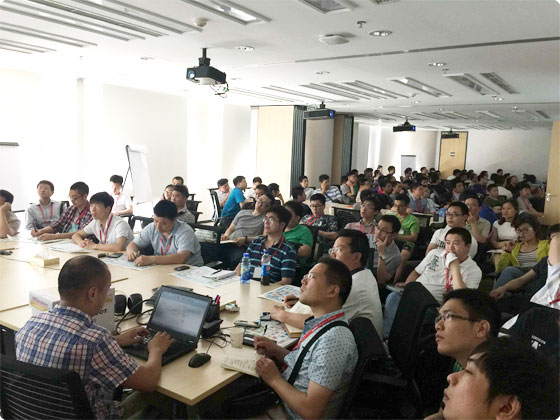课程重点:
Server Configuration
Enterprise Manager Grid Control
Managing Database Availability
Data Management
Data Warehouse Management
Performance Management
Grid Infrastructure and ASM
Real Application Clusters
Data Guard
课程获取的经验值:
学完本课程,能够非常熟练的掌握各个考试中涉及到的知识点,熟悉考试中用到的帮助文档,理解各个技术的实际应用,一句话,非常熟练的掌握就是通过率的保障。
课程时间:
本课程学习时间为24课时。
课程目标:
为通过考试奠定坚实的基础。
课程大纲:
1.Server Configuration
Create the database
Determine and set sizing parameters for database structures
Create and manage temporary, permanent, and undo tablespaces
Stripe data files across multiple physical devices and locations
Configure the database environment to support optimal data access performance
Create and manage database configuration files
Create and manage bigfile tablespaces
Create and Manage a tablespace that uses NFS mounted file system file
Create and manage multiple network configuration files
Create and configure a listener
Configure the database instance to support shared server connections
Set up network tracing
Manage Oracle network processes
Configure the network environment to allow connections to multiple databases
Use configurationless connections
Use OPatch to install a patch
Use Grid Infrastructure to manage oracle databases and other resources
Use Enterprise Manager Configuration Assistant(EMCA) utility
2.Enterprise Manager Grid Control
Install and Patch Enterprise Manager Grid Control software
Configure the Enterprise Manager repository
Create Enterprise Manager Grid Control users
Use Enterprise Manager to modify a database configuration
Configure Enterprise Manager to modify database availability
Create and manage jobs
Create and monitor alerts
Create notifications
Implement Grid Control and Database Control
Choose the appropriate tablespace type for the intended use
Create Scheduler jobs
Create schedules
Assign jobs to windows
Create programs
Create job classes
Install the Enterprise Manager Grid Control infrastructure
Deploy Enterprise Manager Grid Control agents
Configure Grid Control for business requirements
3.Managing Database Availability
Mantain recovery catalogs
Configure Recovery Manager
Use Recovery Manager to perform database backups
Use Recover Manager to perform complete database restore and recovery operations
Configure RMAN
Create different types of RMAN backups to cater for different performance and retention requirements
Set Flashback Database parameters
Configure a Fast Recovery Area
Perform various recovery operations using Flashback technology
4.Data Management
Manage Materialized Views to improve rewrite and refresh performance
Configure and manage distributed materialized views
Create and Manage encrypted tablespaces
Manage Transport of tablespaces across platforms
Configure a schema to support a star transformation query
Administer external tables
Implement Data Pump export and import jobs for data transfer
Implement Data Pump to and from remote databases
Configure and use parallel execution for queries
Use SQL*Loader
Administer, manage and tune parallel execution
5.Data Warehouse Management
Administer partitioned tables and indexes using appropriate methods and keys
Perform partition maintenance operations
Maintain indexes on a pa rtitioned table
Implement securefile LOB
Create and manage LOB segments
Implement fine-grained access control
Create and manage contexts
Administer flashback data archive and schema evolution
6.Performance Management
Administer Resource Manager
Use Result Cache
Use multi column statistics
Gather statistics on a specific table without invalidating cursors
Use partitioned indexes
Administer and tune schema object to support various access methods
Interpret execution plan
Use SQL tuning tools and features
Use SQL Tuning Advisor
Use SQL Access Advisor
Use SQL Performance Analyzer
Configure baseline templates
Use SQL Plan Management feature
Implement instance caging
7.Grid Infrastructure and ASM
Install Oracle Grid Infrastructure
Create ASM Disk Groups
Create and manage as ASM instance
Implement ASM failure groups
Creating ACFS File System
Start, stop, configure and administer Oracle Grid Infrastructure
8.Real Application Clusters
Install the Oracle Database 11gR2 software
Configure ASM for the shared disks and create a clustered database
Configure archiving
Configure services using both Manual and Policy Managed methods
9.Data Guard
Create Physical Standby Database with real-time apply.
Configure the data guard environment to reduce overheads of fast incremental backups on the primary database
Configure the Observer
Switchover and switch back
Configure connect time failover
Convert the standby to a snapshot standby
Configure archivelog deletion policy for the Dataguard configuration



























